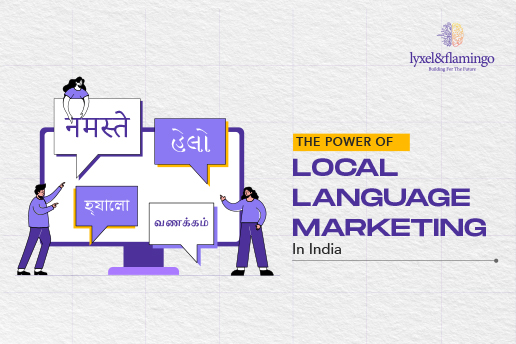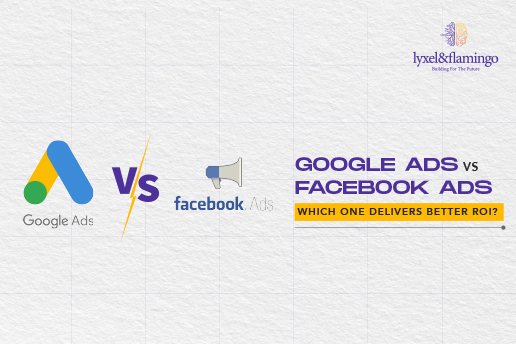There are many ways to monetize your website and generate a decent amount of income from it. You can sell ad spaces, use affiliate marketing, sell digital products, and use many other methods to generate revenue from your website.
However, if you are new to it, you should start monetizing your website using simpler and relatively easier methods. In this article, you will learn the top three ways to generate revenue on your website and how to improve them.
Let’s get started!
1) Sell Ad Spaces
Selling ad space is one of the most common and probably the easiest ways to monetize digital assets and earn revenue from your websites. If you have a high-quality website that attracts a lot of engaged traffic, advertisers or business owners would want to show their products on your site via ads.
In simple words, you will sell a portion of your website and web pages where the business owners and advertisers will show their products or services to your visitors.
Some of the most common types of ad formats are,
- Display ads
- Native ads
- Interstitial ads
- Video ads
- Banner ads
- Pop-up ads
These ads can come in all shapes and sizes and hold a small space on your website to display different products. And you earn money for allowing the advertisers to show these ads on your website. The more website visitors you have, the more money you make.
There are two main ways to sell ad spaces and earn revenue from your website. You can sell ad space directly to a business owner and advertiser or use ad networks like Google AdSense to earn more revenue in passive mode. Of course, you can try both of these methods if you want.
Direct Selling
Direct selling is just what it sounds like – you sell ad spaces directly to the business owners or advertisers. Selling ad spaces this way can help you earn more money as there are no middlemen in this method.
You can even state your own pricing for selling ad spaces and provide attractive discounts to advertisers to have a long working relationship. However, this method can also be hectic, and if you don’t manage it well, it can even hurt your wallet.
To sell ad spaces directly, you need to invest in your own tools, use your money to manage the ads, and constantly monitor the ads for accurate placement and timing.
Using Ad Networks
When you are using ad networks like Google AdSense, you, as a publisher, can connect with hundreds of thousands of advertisers. You just have to worry about getting your website approved by the ad network. Once it’s done, you can specify the types of ads you want to showcase on your website and how much ad space you are willing to provide.
Thousands of advertisers will be bidding to show their ads on your website, and the ad network will show them and manage them. You must perform the initial setup by following the ad network guidelines to show the ads on your website.
Usually, there are two ways you can earn revenue from your website while using this ad space-selling method. You can either get your payments based on the PPC (pay per click) or CPM (cost per mile) model.
How to Improve Ad Space Sale Revenue?
As a website owner or publisher, you can employ several tactics to increase your web traffic and improve your ad space sale revenue. Here are a few tips you can use to boost your income:
- First, try to improve the number of website visitors. You can use social media posts, SEO marketing, can boost the website loading speed, and several other factors to increase the number of your web visitors and make them stay on your website for a long time.
- Make sure not to use more than 5-6 ads on a single page. Unless your page contains content that is very long, engaging, and informative, using more than 5-6 ads can overwhelm and irritate the readers. It will also decrease the effectiveness of other ads and negatively affect the future revenue of the website.
- Try using different types of ads. As we have mentioned before, you can use multiple types of ads like video ads, native ads, banner ads, etc. Don’t just stick to a single form of advertisement. Increase the variety and add suitable ad formats to the relevant pages to enhance the readers’ engagement with the ads.
- Depending on your web page and the revenue model, you can use different ad sizes to see what fits your website the best.
- Finally, make sure both your website and ads are mobile-optimized. The banner ad that looks great on a desktop might look really bad on a mobile screen. Optimize the ads for the mobile view to ensure they don’t get in the way of your readers.
2) Try Affiliate Marketing
Affiliate marketing is yet another popular way to monetize your website. You can think of it as earning money for referring products of other companies to your web visitors. You can mention the products or services via product reviews, affiliate links, ads, and many other forms.
Whenever a web visitor clicks on an affiliate link or ad, the visitor will be directed to the product or service page related to the link or ad.
If the visitor purchases a product or subscribes to a service, the advertiser or the affiliate network will know that the traffic came from the affiliate link related to your website, and you will receive a small commission from the sale.
The affiliate networks can be an eCommerce store, online or offline service provider, digital products like e-books or audiobooks, etc. Amazon’s affiliate program is one such example. If you showcase products from Amazon on your site via affiliate links and someone uses the link to buy a product, you will get a commission from Amazon.
While it’s one of the most lucrative ways to earn revenue using your website, you must pick products and affiliate partners relevant to your niche. Randomly showcasing any product or service that isn’t relevant to your web page degrades your readers’ experiences and impressions of your website, leading to higher bounce rates or less traffic.
How to Improve Affiliate Marketing Revenue?
Follow the tips mentioned below to increase your affiliate marketing revenue:
- When you are writing product reviews or similar blogs, use the “call to action” buttons and add your affiliate links to them. This way, readers can clearly see the product links, and they don’t have to search for the product elsewhere just because it was hard to find the link on your website.
- Exit-intent pop-up banners can be used to promote your affiliate products and services. Whenever readers intend to leave your website, this kind of pop-up shows up, displaying a service or product that is relevant to the web page or the website.
- Another way to increase affiliate revenue from your website is to build a better relationship with your affiliate managers and ask them for a raise in commission.
- You should use white-hat SEO tactics to grow your website’s organic traffic slowly. Traffic gained through organic means is often high-quality leads who have a certain interest in your web content and related offers. So, as their number increases, your affiliate sales will increase too.
3) Use Paywalls for Premium Content
Does your website have data-driven content full of valuable information, case studies, research articles, special services, actionable e-books, or any other content? Are the contents or services good enough for people or relevant readers to pay you a certain fee to access them?
If your answer is yes, you can use paywalls for premium content to generate revenue from your website. But before we go any further, let’s take a look at different types of paywalls and how they work.
Types of Paywall
Paywalls can be categorized into four different types. They are:
A. Hard Paywalls
Have you ever seen a website that shows you just a few lines of content before asking you to sign up for a membership in exchange for a small fee or subscribe to continue reading? These kinds of websites use hard paywalls.
They would entice the readers with the first few lines or the intro first. And just when the readers are getting interested, a notification would show up asking them to sign up for membership for a small fee to continue reading. This has become a popular way to generate revenue from websites, especially if the website carries a lot of crucial information.
Wall Street Journal is one of the best examples of the use of hard paywalls, and they have more than 2.9 million paying members on their website.
B. Soft Paywalls
Websites with soft paywalls don’t push the readers to subscribe or sign up for membership straight away. They would limit how many pages you can browse on their websites each week or month.
And once you hit the limit, you would need to pay a small monthly or weekly fee to continue reading. These types of paywalls are also known as metered paywalls.
C. Ad-free Paywalls
Let’s face it. Ads can get pretty annoying sometimes. That’s why many websites offer ad-free experiences for a small monthly fee. This way, visitors who want to enjoy an ad-free experience would pay small fees like $5 a month and avoid the clutter filled with ads.
If your website has interesting information, this model of generating revenue from the website can work pretty well. Many entertainment websites like streaming sites, gaming sites, and manga collection sites use this kind of paywall.
D. Premium Content Paywalls
Some websites allow any visitor to read most of the blog posts or content while hiding the premium and in-depth articles and analysis behind a paywall. So, if the readers want to read the premium content, they have to join a membership and pay a small monthly fee.
This kind of paywall is known as a premium content paywall. For instance, Statista, a famous data analysis and statistics website, allows its visitors to check many statistics for free while keeping in-depth analysis and important stats behind their paywall.
How to Improve Your Paywall Revenue?
Use the following tips to increase your website’s paywall revenue:
- Increase your paywall’s visibility rate. For example, if you are using a premium content paywall, make sure visitors can see the premium articles and click on them to see the paywall notification.
- Try modifying your paywall design regularly to see which one attracts more attention and can convert visitors at a higher rate. Test the CTA button placement, change the paywall pop-up’s color, and write an interesting copy. In short, keep testing with different aspects to improve the paywall’s conversion rate.
- Make sure that your paywall notification is dynamic and mobile-friendly. If you are serving different countries, use a paywall service that shows users the paywall notification in their native languages.
- Incorporate discounts and time-limited offers in your paywall pop-up to increase the sign-up rate and generate more revenue from your website.

Wrapping It Up
You have worked hard and put a lot of effort into growing your website, building a brand, and gaining thousands of loyal visitors. And using the top three monetizing methods we have mentioned above, you should be able to earn decent revenue from the website.
Try selling ad space on your website. If you are new to it, you can start by working with the ad networks like Google AdSense to start generating revenue. You can then move forward and earn more money using affiliate marketing and paywalls.
Use the tips we have mentioned in this blog to improve your website’s current revenue streams. This way, you can earn more money without compromising your website’s user experience.









